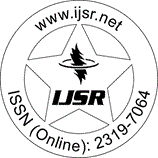Downloads: 115
India | Electronics Communication Engineering | Volume 3 Issue 7, July 2014 | Pages: 882 - 886
Efficient PAPR Reduction in OFDM Systems Based on a Companding Technique
Abstract: Orthogonal Frequency Division Multiplexing (OFDM) has become the most widely adopted technology in wireless communication systems. OFDM is limited mainly by its high Peak-to-Average Power Ratio (PAPR). A uniformly distributed nonlinear companding scheme efficiently reduces PAPR with a low Bit Error Rate (BER). However, the uniformly distributed companding scheme cannot perform variably to satisfy the different performance requirements for the systems. Therefore, this work proposes a novel scheme that transforms the OFDM signals into a trapezium distribution. The uniformly distributed companding scheme is a special case of the proposed scheme. The general formulas of the proposed scheme are derived and the trade-off between PAPR reduction and BER performance is achieved by setting the value of a parameter. Then, the simulation results show the PAPR reduction and the BER over the AWGN and multipath channels, indicating that the proposed scheme provides a favorable trade-off between the PAPR reduction and the BER.
Keywords: Companding, OFDM, PAPR
How to Cite?: Rikhee Ram, Aashish Hiradhar, "Efficient PAPR Reduction in OFDM Systems Based on a Companding Technique", Volume 3 Issue 7, July 2014, International Journal of Science and Research (IJSR), Pages: 882-886, https://www.ijsr.net/getabstract.php?paperid=2014945, DOI: https://dx.doi.org/10.21275/2014945
